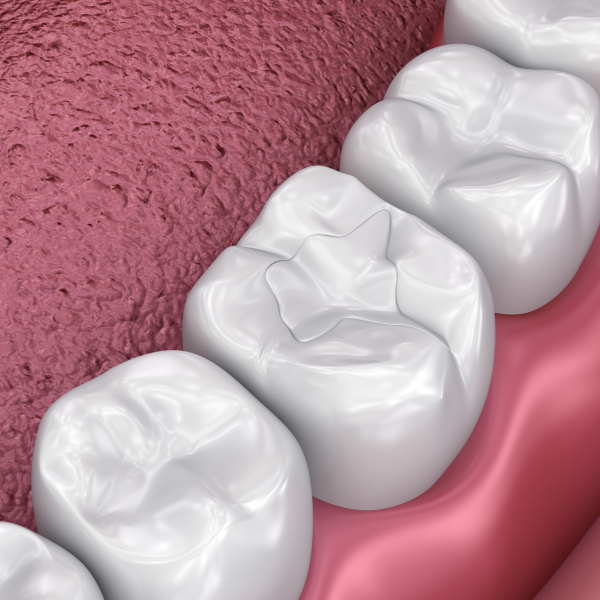Dental Fillings Near You
Dental cavities and chipped teeth are common dental problems, but they do not have to take over your smile for a prolonged period. At Lanier Valley Dentistry, we offer excellent-quality dental fillings that not only renew the aesthetic appearance of your teeth but also make them strong again. Our experienced dentist in Dacula is prepared to assist you in preserving your oral health through treatments that are both practical and natural-looking.
Why Do You Need a Dental Filling?
Cavities occur when sugar and bacteria in your mouth cause the tooth enamel to form holes, hence leading to extensive damage and even loss of a tooth if not treated.
You should consider dental fillings in the following situations:
- If you have Tooth sensitivity or pain
- When you find Dark spots on a visible tooth
- Difficulty in consuming particular foods
- Enamel loss
If you experience any of these symptoms, it is important to visit a Dacula dentist to avoid further damage.

Types of Dental Fillings
Once the cavity is detected, a dentist near you can assist you in selecting the most suitable filling material that suits your needs. Some of the usual choices are:
- Amalgam (a combination of metals such as tin, copper, and silver)
- Gold
- Composite resin (shade-matched fillings)
- Glass ionomer
Composite resin fillings have gained a lot of popularity because they are strong, match naturally with your teeth, and can last for 10 years if well taken care of.
We would recommend that you consult a dentist before opting for dental fillings in Dacula.
What to Expect From the Dental Filling Process
Below are the step-by-step details about the process of dental filling:
- Numbing the area: The dentist numbs the area so that you will feel comfortable during the process
- Removing Rot: The rotten parts of the tooth are pulled out by the dentist with a drill or a laser.
- Cleaning the cavity: The area is disinfected to remove all bacteria or pieces of debris.
- Sealing the tooth: In composite resin, a bonding agent is applied before the placement and contouring of the material.
- Curing the filling: A special light hardens the filling to ensure a strong hold.
- Final adjustments: Your dentist will polish the filling and ensure your bite is comfortable.
- Aftercare: You’ll also receive aftercare instructions to help your filling last as long as possible.
Benefits of Getting a Dental Filling
Opting for dental fillings near you provides several advantages, such as:
- Restoring tooth structure: Fillings restore the shape and function of your tooth to its natural state.
- Preventing further decay: Early treatment of cavities prevents damage from progressing deeper in the tooth.
- Making it appear better: Tooth-coloured fillings are not visible, maintaining your natural appearance.
Protect Your Smile with Lanier Valley Dentistry
If you require long-lasting, natural-appearing dental fillings, our compassionate team is ready to assist. We at Lanier Valley Dentistry strive to provide superior dental fillings in Dacula that will improve the health of your mouth and your self-esteem.Schedule an appointment with our reputable Dacula dentist today to get started on the path towards a healthier, happier smile!
Frequently Asked Questions About Dental Fillings
What is a dental filling?
A dental filling is a restorative material used to repair a tooth damaged by decay or trauma. It is placed into the prepared cavity to restore the tooth’s structure and prevent further decay.
What types of materials are used for dental fillings?
Common dental filling materials include amalgam (a mixture of metals), composite resin (tooth-colored material), ceramic, and glass ionomer. The choice of material depends on factors such as the location of the tooth, the extent of the decay, and aesthetic considerations.
How do I know if I need a dental filling?
You might require a dental filling if you notice symptoms like toothache, sensitivity to hot or cold foods, visible holes or pits in your teeth, or if cavities are detected during a routine dental examination or through X-rays.
Is the dental filling procedure painful?
The dental filling procedure is generally not painful. Local anesthesia is administered to numb the tooth and the surrounding area, ensuring your comfort throughout the process. Afterward, some patients may experience mild sensitivity, which typically resolves quickly.
How long do dental fillings last?
The lifespan of a dental filling varies based on factors such as the material used, the size and location of the filling, and individual oral hygiene habits. Generally, dental fillings can last from several years to over a decade. Regular dental check-ups are important for monitoring the condition of fillings and detecting any potential issues early on.
Are tooth-colored fillings as durable as silver amalgam fillings?
Tooth-colored fillings, made from composite resin, are highly durable and well-suited for treating small to moderate-sized cavities. They are crafted to blend seamlessly with the natural color of your teeth, making them a preferred choice for visible areas. While silver amalgam fillings are valued for their strength, advancements in dental materials have made tooth-colored fillings a dependable and aesthetically pleasing option for many patients.



 678-802-1209
678-802-1209 Request Consultation
Request Consultation
